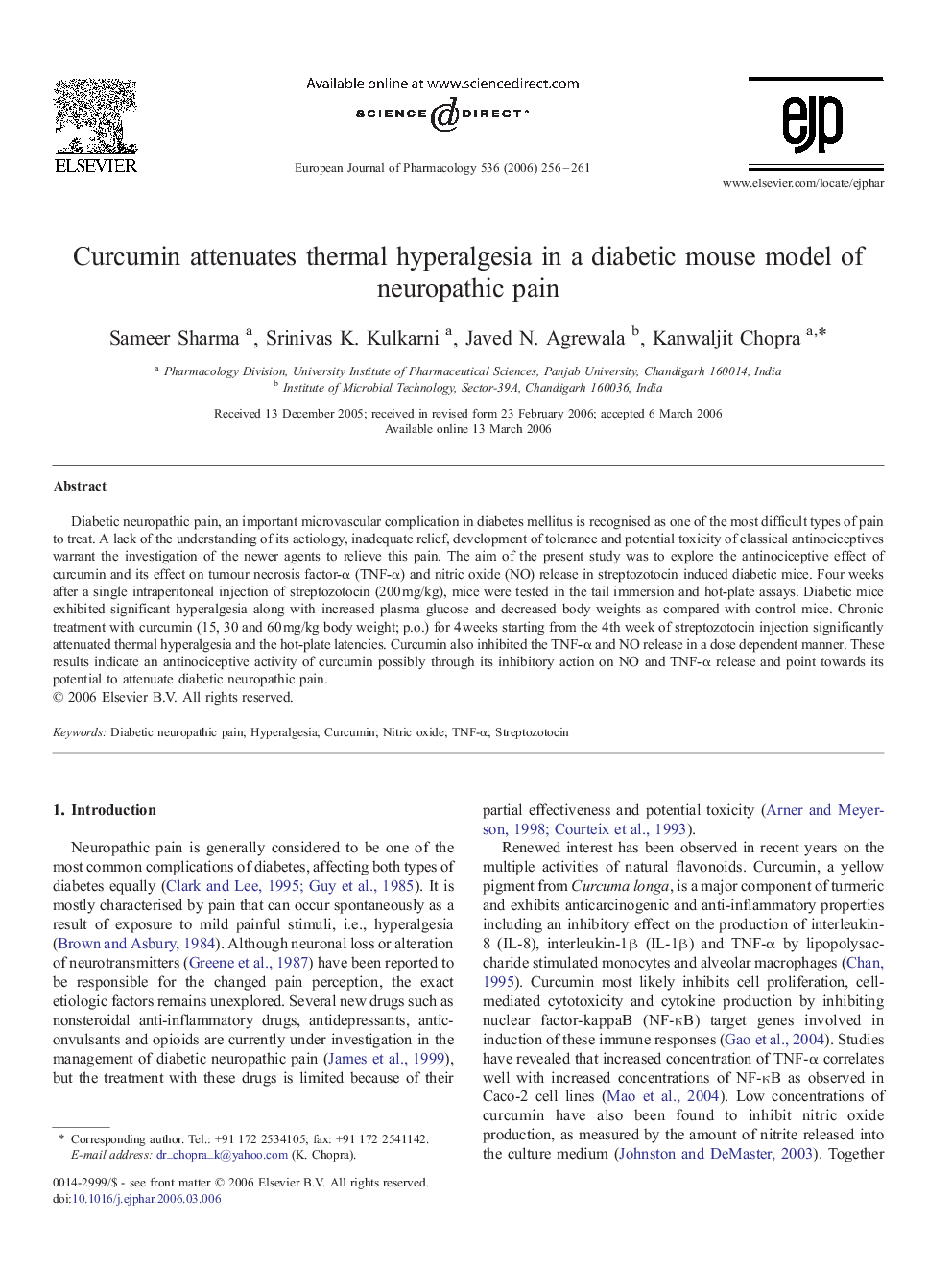| Article ID | Journal | Published Year | Pages | File Type |
|---|---|---|---|---|
| 2537212 | European Journal of Pharmacology | 2006 | 6 Pages |
Diabetic neuropathic pain, an important microvascular complication in diabetes mellitus is recognised as one of the most difficult types of pain to treat. A lack of the understanding of its aetiology, inadequate relief, development of tolerance and potential toxicity of classical antinociceptives warrant the investigation of the newer agents to relieve this pain. The aim of the present study was to explore the antinociceptive effect of curcumin and its effect on tumour necrosis factor-α (TNF-α) and nitric oxide (NO) release in streptozotocin induced diabetic mice. Four weeks after a single intraperitoneal injection of streptozotocin (200 mg/kg), mice were tested in the tail immersion and hot-plate assays. Diabetic mice exhibited significant hyperalgesia along with increased plasma glucose and decreased body weights as compared with control mice. Chronic treatment with curcumin (15, 30 and 60 mg/kg body weight; p.o.) for 4 weeks starting from the 4th week of streptozotocin injection significantly attenuated thermal hyperalgesia and the hot-plate latencies. Curcumin also inhibited the TNF-α and NO release in a dose dependent manner. These results indicate an antinociceptive activity of curcumin possibly through its inhibitory action on NO and TNF-α release and point towards its potential to attenuate diabetic neuropathic pain.
